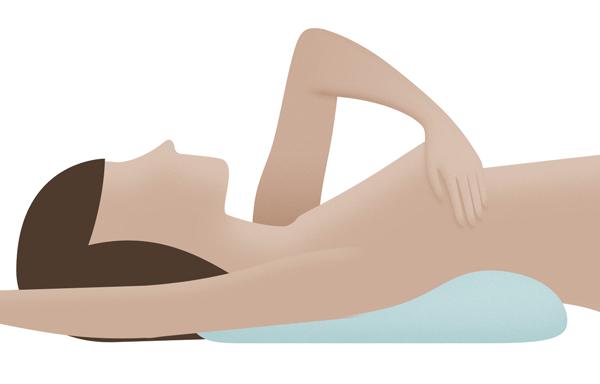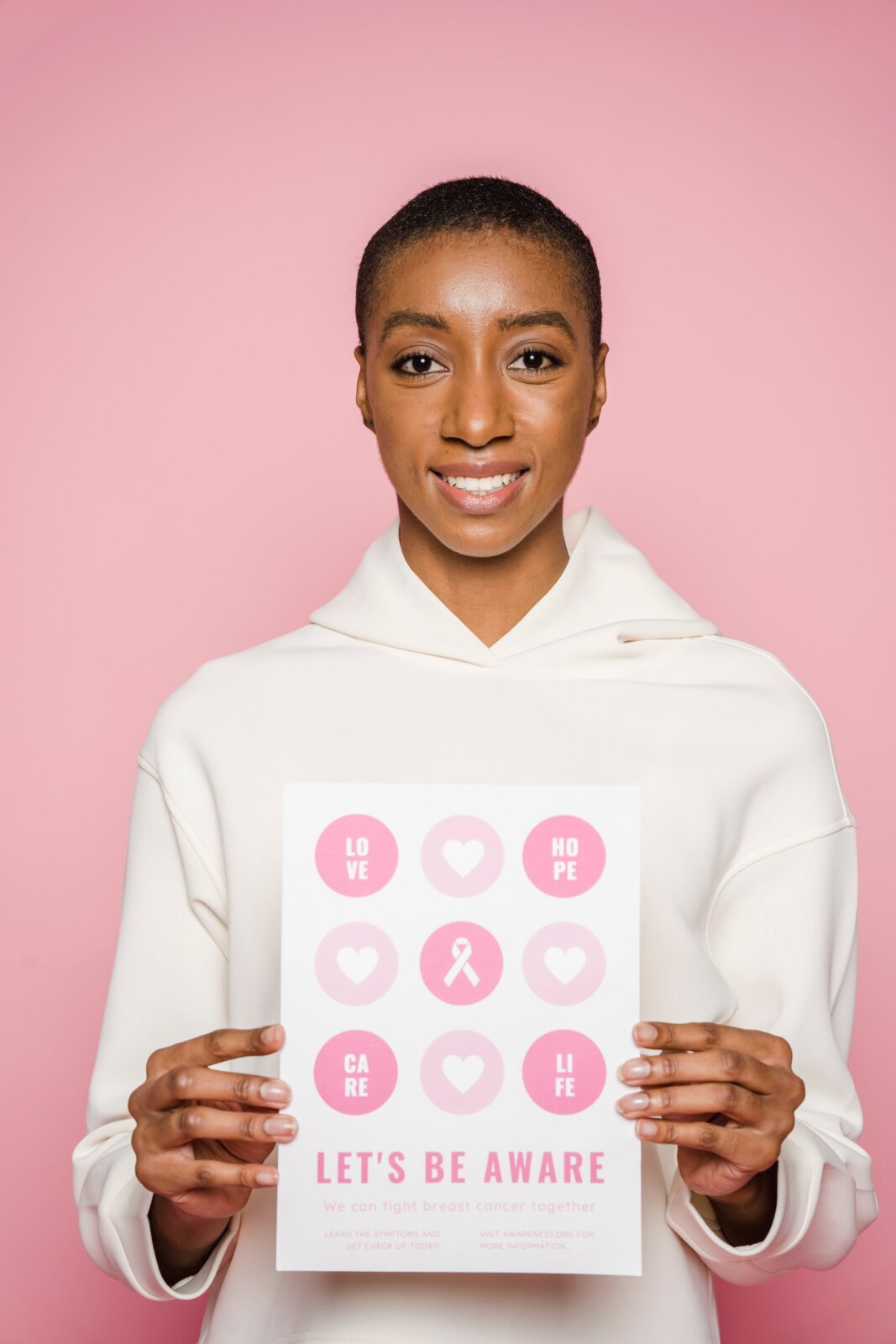Breast cancer takes a significant toll in Nigeria, responsible for 18.6% of the 70,000 cancer-related deaths. It’s a harsh reality – not just the leading cancer killer, but often due to late detection and limited healthcare access.
This disease isn’t limited to any particular group; it affects women and men worldwide. Sadly, there’s no surefire cure, and the treatments can be quite invasive. That’s why we come together to observe Breast Cancer Awareness Month.
This month is our way of showing support and empathy to everyone who has faced this challenge, personally or through a loved one. The main goal is to increase awareness about breast cancer, encourage early screenings, and assist those grappling with the diagnosis and their families. Together, we can make a real impact in the fight against breast cancer.
To raise awareness, we must educate ourselves about the condition and educate others as well. Awareness of risk factors, symptoms, and indicators can help people take control of their breast health. Early detection significantly increases survival chances, frequently achieved by self-examinations and mammography.
Myths Surrounding Breast Cancer
While we commemorate the brave individuals who have battled breast cancer and raise awareness about this condition, we must dispel some prevalent myths surrounding the diagnosis.
MYTH: Breast cancer is exclusively found in women.
TRUTH: While breast cancer is indeed more common in women, it’s essential to recognise that men can also develop this condition. The misconception that it only affects women has led to delayed diagnoses in men, making awareness and early detection critical for everyone, regardless of gender. By dispelling this myth, we can ensure that individuals of all genders are informed and proactive about their breast health, potentially saving lives through early intervention and timely medical care.
MYTH: Breast cancer always manifests as a lump.
TRUTH: Breast cancer can present itself in various ways beyond a lump. While lumps are a common symptom, it’s essential to understand that breast cancer may also manifest as skin changes, nipple discharge, or other symptoms. This misconception can delay diagnosis, as individuals might not recognise these alternate signs as potential indicators of breast cancer. By debunking this myth, we empower people to be vigilant about all possible breast cancer symptoms, fostering early detection and potentially more effective treatment. Awareness of these diverse signs can save lives by ensuring timely medical attention.
MYTH: Only older people are at risk for breast cancer.
TRUTH: While the risk of breast cancer does increase with age, it’s a misconception to assume that younger individuals are immune. Breast cancer can affect people of all age groups, including younger individuals. Dismissing this myth is crucial, as it encourages awareness and proactive measures among younger populations who may perceive breast cancer as a distant concern. Understanding that it can strike at any age underscores the importance of regular screenings and breast health education for everyone, potentially leading to earlier diagnoses and improved outcomes, regardless of age.
MYTH: Breast cancer is caused by antiperspirants and deodorants.
TRUTH: The notion that antiperspirants and deodorants contribute to breast cancer is not substantiated by scientific evidence. This myth has circulated for years, causing unnecessary concern among individuals who use these personal care products. It’s essential to rely on scientific research, which has consistently failed to establish a link between these everyday items and breast cancer. Dispelling this myth is important because it reduces unwarranted fear and encourages a focus on more substantiated risk factors and preventative measures, ultimately promoting a more accurate understanding of the disease.
Performing A Self Check Examination
One simple and highly safe method for monitoring your breast health is through self-examination. Regular self-checks empower you to become intimately familiar with your breasts’ normal state and promptly detect any changes. Early recognition typically leads to less aggressive treatment options and a higher likelihood of overcoming the condition.

Self-examination is crucial and a cost-effective approach that takes just under 10 minutes. You need minimal resources – a mirror, your hands, and a bed. By dedicating a small amount of your time to self-examination, you invest in your breasts’ well-being and overall health.
According to the National Breast Cancer Foundation INC., there are three main steps to self-examination, which should be followed carefully.
- Step One: Apply gentle, medium, and firm pressure using the pads of your three middle fingers. Every month, feel both breasts for any changes in the breasts, including thickenings, stiffened knots, or new lumps.
- Step Two: As you visually examine your breasts with your arms at your sides, watch for any changes in the nipples, dimpling, swelling, or other abnormalities in the skin on or around your breasts. Then, to flex your chest muscles, place your palms on your hips and press down hard. Take note of any changes, especially on one side, such as puckering or dimpling. Remember that not all women have precisely symmetrical breasts, so the left and right breasts won’t always match.
- Step Three: The breast tissue equally distributes throughout the chest wall when one is in a lying position. Put your right arm behind your head and a cushion under your right shoulder. The pads of your three middle fingers should be moved around your right breast, encompassing the whole breast and armpit, using your left hand. To feel for any new lumps, thickenings, stiffened knots, or other alterations to the breast, apply gentle, medium, and firm pressure. Squeeze the nipple as well to feel for any secretion. Repeat these instructions for your left breast.
How Can You Get Involved
The battle against breast cancer extends beyond those directly affected by the condition. It calls for collective action from all of us, whether personally impacted or not. How can each of us contribute to this important cause?
Donate
Many organisations are involved in cancer research, and many organisations provide funding for rounds of chemotherapy for women. You can donate to cancer research or organisations that fund chemotherapy rounds for women who cannot afford it and the needed treatment medications. Here are a few organisations in Nigeria you can donate to.
- Cancer Aware Nigeria. Donate here
- C.O.P.E Breast Cancer. Donate here
- Sebeccly Cancer Care. Donate here
Educate yourself and others
The first step toward freedom is education. Knowledge is power; wield that power and learn all you need about cancer. Find reputable research papers or websites with a comprehensive layout on all you need to know about the diagnosis and how to help. Take the chance to educate women and men about this condition and get everyone on board.
Support those Affected
Aside from donating to improve research and treatment options for people battling the condition, you can reach out to people affected by cancer. Breast cancer not only affects the physical health of its victims. It also affects their mental health and the mental health of their families and friends. Reach out to close relatives and family members and help them in the ways you can.
Advocate For Change
Advocating for change is the key to creating a brighter world. It involves championing improved healthcare, greater access to medical resources, and increased funding for research that can bring positive changes to those affected by this condition. Your voice can be a powerful force for good.
Hope begins with us
Breast Cancer Awareness Month serves as a poignant reminder of the critical need to intensify our efforts to raise awareness, provide unwavering support, and pay heartfelt tribute to the astounding strength exhibited by those who confront breast cancer head-on. The impact of this disease extends beyond the individual to encompass their families and communities, irrevocably altering life trajectories.
It’s incumbent upon all of us to contribute to making this challenging journey more manageable for those grappling with breast cancer. This involves spreading awareness and advocating for improved medical resources, timely screenings, and advanced research. By doing so, we can offer a ray of hope and the promise of a better future to those affected.
It’s essential to bear in mind that breast cancer doesn’t discriminate. It can affect anyone, regardless of age, gender, or background. However, it’s equally vital to recognise that a breast cancer diagnosis is not a life sentence. With early detection, effective treatments, and the unwavering support of a compassionate community, the journey through breast cancer can be a testament to resilience and the enduring human spirit.



